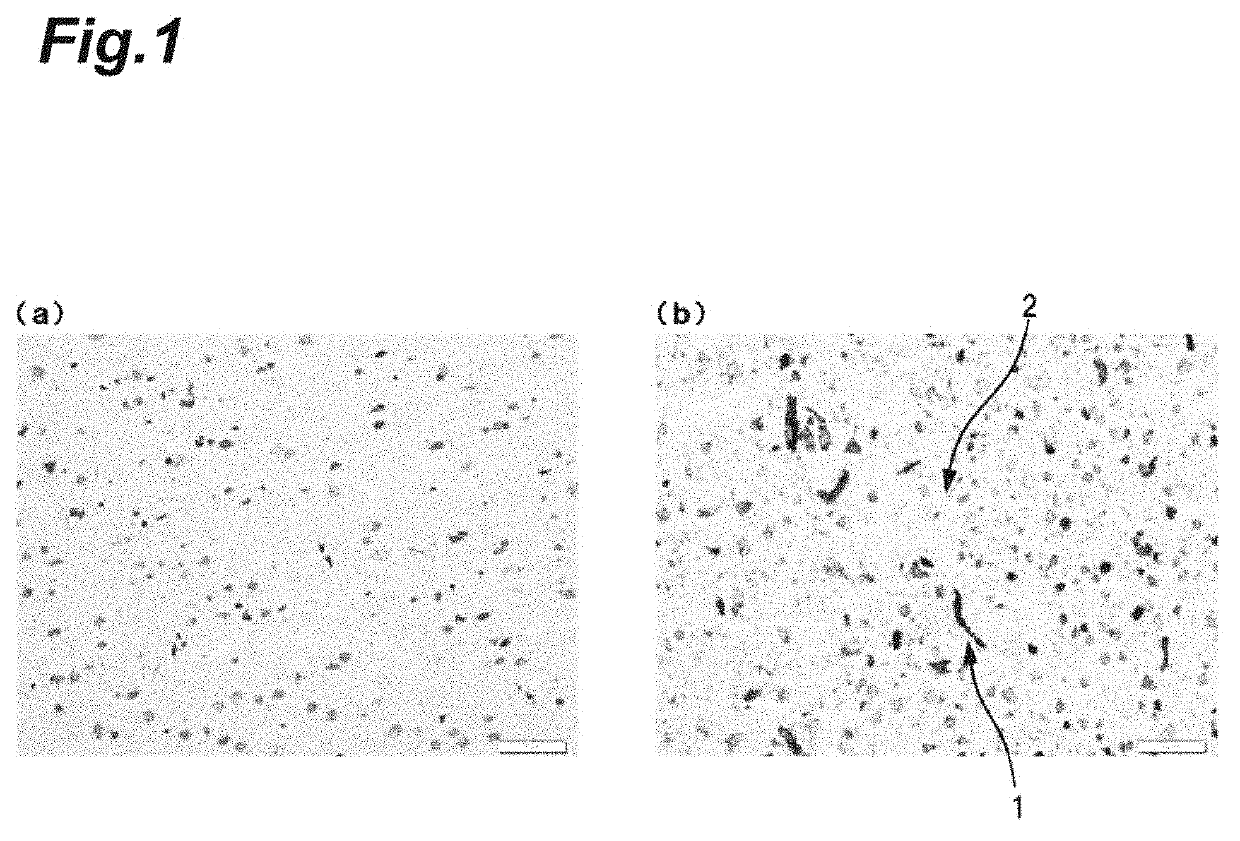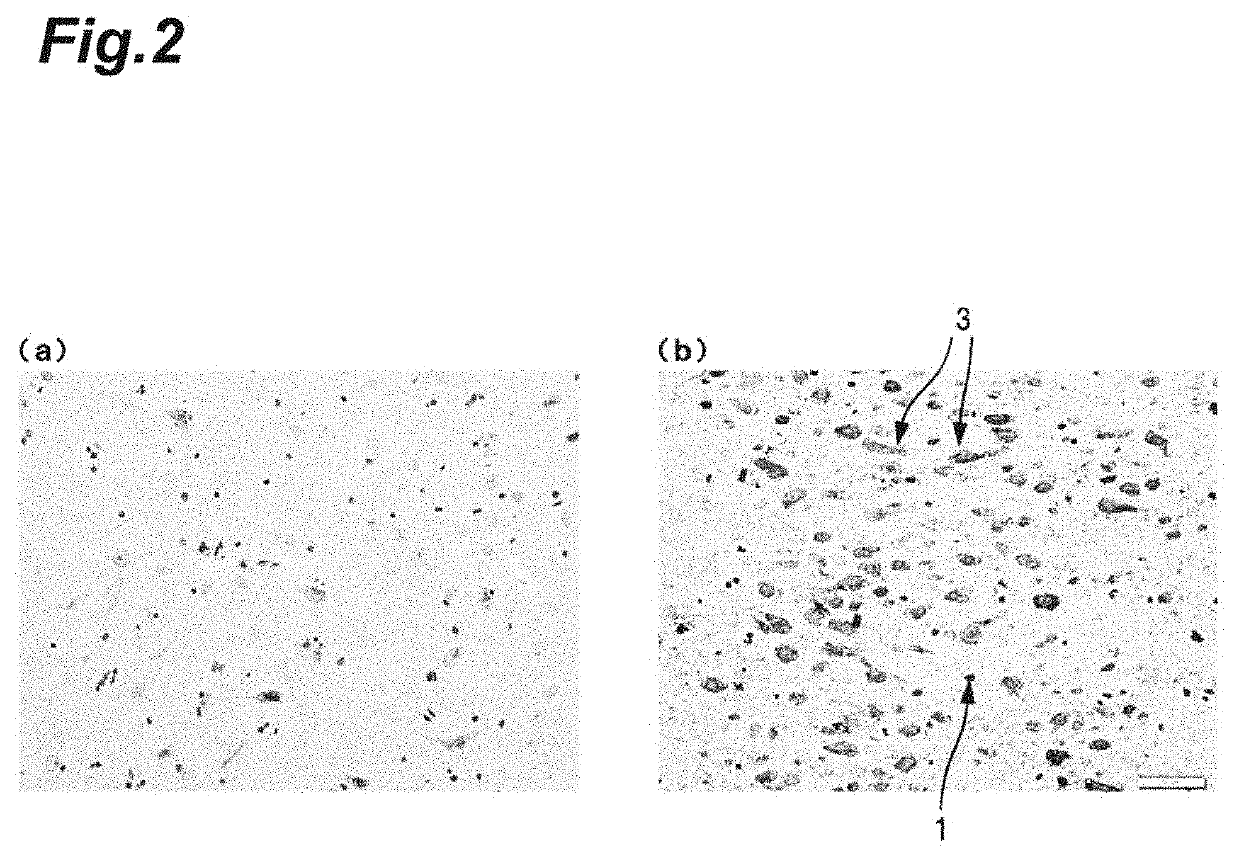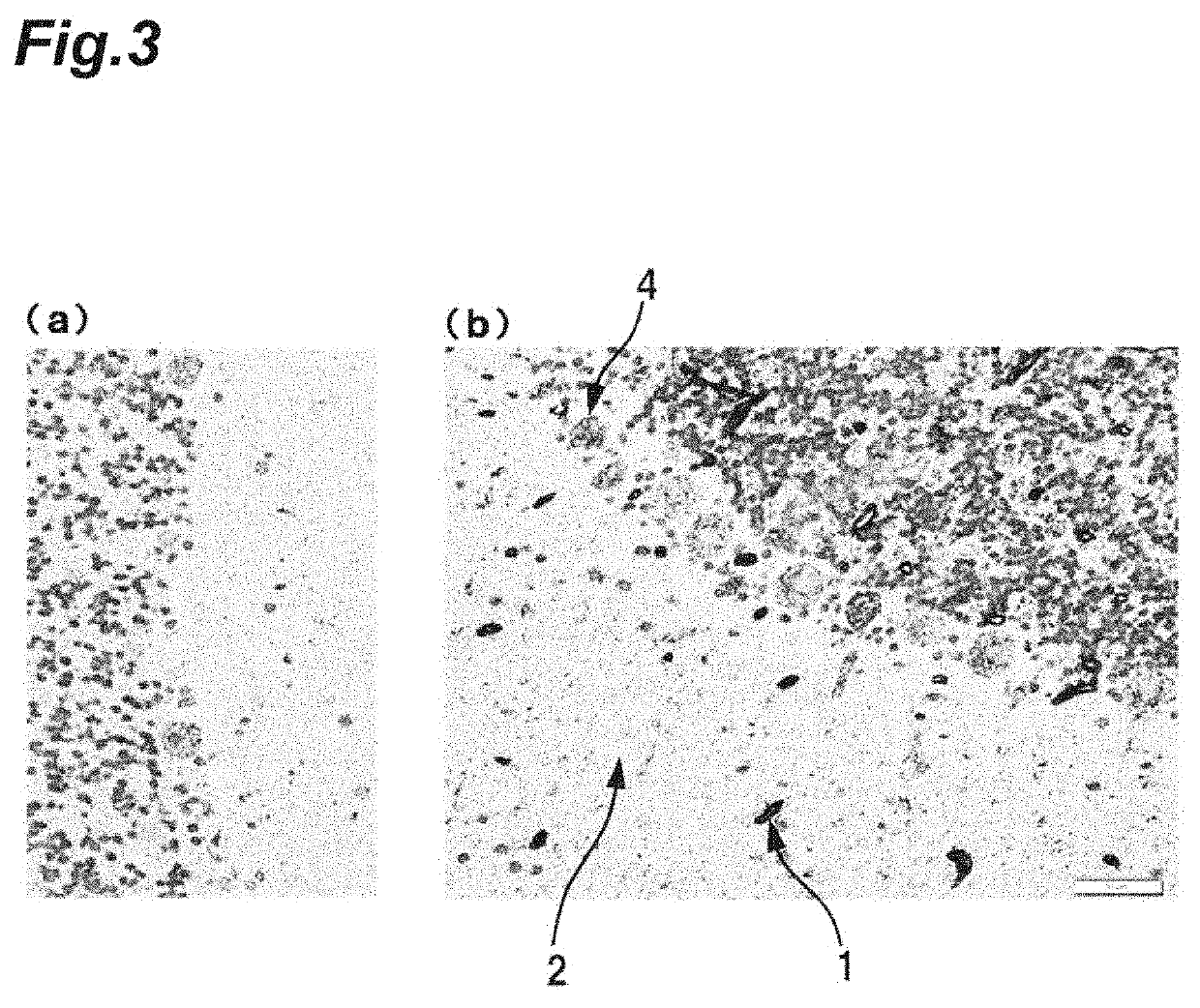Novel Anti-Human Transferrin Receptor Antibody Capable of Penetrating Blood-Brain Barrier
a transferrin receptor and antibody technology, applied in the direction of antibody medical ingredients, fusions for specific cell targeting, pharmaceutical active ingredients, etc., can solve the problems of blood-brain barrier, high invasiveness, and ineffective therapy for notable abnormalities observed in the central nervous system
- Summary
- Abstract
- Description
- Claims
- Application Information
AI Technical Summary
Benefits of technology
Problems solved by technology
Method used
Image
Examples
example 1
[Example 1] Construction of hTfR Expression Vector
[0753]Employing human spleen Quick Clone cDNA (Clontech Inc.) as a template and using primer hTfR5′ (SEQ ID NO:41) and primer hTfR3′ (SEQ ID NO:42), PCR was performed to amplify the gene fragment encoding human transferrin receptor (hTfR). The amplified fragment encoding hTfR was digested with MluI and NotI, and then inserted between MluI and NotI sites of vector pCI-neo (Promega Inc.). The vector thus prepared was designated pCI-neo(hTfR). This vector then was digested with MluI and NotI to cut out the gene fragment encoding hTfR, and this fragment was inserted between MluI and NotI sites of pE-mIRES-GS-puro, an expression vector disclosed in an international publication WO 2012 / 063799 to construct an hTfR expression vector, pE-mIRES-GS-puro(hTfR).
example 2
[Example 2] Preparation of Recombinant hTfR
[0754]Into CHO-K1 cells was introduced pE-mIRES-GS-puro(hTfR) by electroporation, and the cells then were subjected to selection culture in a CD OptiCHO™ medium (Invitrogen Inc.) containing methionine sulfoximine (MSX) and puromycin to prepare recombinant hTfR expressing cells. The recombinant hTfR expressing cells were cultured, and recombinant hTfR was prepared.
example 3
[Example 3] Immunization of Mouse with Recombinant hTfR
[0755]Mice were immunized with recombinant hTfR prepared in Example 2 as antigen. Immunization was carried out by intravenously or intraperitoneally injecting the mice with the antigen.
PUM
| Property | Measurement | Unit |
|---|---|---|
| dissociation constant | aaaaa | aaaaa |
| dissociation constant | aaaaa | aaaaa |
| molecular-weight | aaaaa | aaaaa |
Abstract
Description
Claims
Application Information
 Login to View More
Login to View More - R&D
- Intellectual Property
- Life Sciences
- Materials
- Tech Scout
- Unparalleled Data Quality
- Higher Quality Content
- 60% Fewer Hallucinations
Browse by: Latest US Patents, China's latest patents, Technical Efficacy Thesaurus, Application Domain, Technology Topic, Popular Technical Reports.
© 2025 PatSnap. All rights reserved.Legal|Privacy policy|Modern Slavery Act Transparency Statement|Sitemap|About US| Contact US: help@patsnap.com



